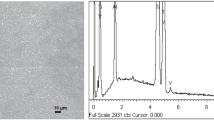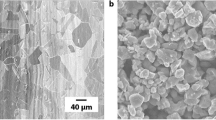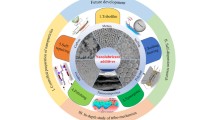Abstract
The good wear-resistance of state-of-the-art liquid lubricants is due to the formation of complex metal and organometallic films onto the friction surface, reducing the friction and wear. For this purpose, various additives of metal nanopowders are used, especially ones based on copper. The formation and growth of Cu nanoparticles, as well as the tribotechnical characteristics of lubricants, are mainly affected by the choice of stabilizer, because nanoparticles cannot resist the external conditions without protecting their surface. According to quantum chemical studies, the best stabilizer in the series of gelatin, ammonia, sodium borohydride, and sodium citrate is gelatin due to the very large amount of functional groups in its structure. The characterization of physicochemical properties via dynamic light scattering, atomic force microscopy, and electron microscopy, as well as the tribotechnical characteristics of liquid lubricants with stabilized Cu nanoparticles, are consistent with quantum chemical calculations, confirming that Cu nanoparticles stabilized in gelatin possess the better tribotechnical properties than other stabilizers.




Similar content being viewed by others
REFERENCES
Don, J., Sun, T.C., and Rigney, D.A., Wear, 1983, vol. 91, no. 2, pp. 191–199.
Gulzar, M., Masjuki, H.H., Kalam, M.A., et al., J. Nanopart. Res., 2016, vol. 18, p. 223.
Kolodziejczyk, L., Martínez-Martínez, D., Rojas, T.C., et al., J. Nanopart. Res., 2007, vol. 9, p. 639.
Koshy, C.P., Rajendrakumar, P.K., and Thottackkad, M.V., Wear, 2015, vols. 330–331, pp. 288–308.
Arumugam, S. and Sriram, G., Proc. Inst. Mech. Eng., Part J, 2014, vol. 228, pp. 1308–1318.
Alves, S.M., Barros, B.S., Trajano, M.F., Ribeiro, K.S.B., and Moura, E., Tribol. Int., 2013, vol. 65, pp. 28–36.
Ramos, J., Piamba, J.F., Sánchez, H., et al., Hyperfine Interact., 2015, vol. 232, p. 119.
Frishberg, I.V., Zolotukhina, L.V., Kharlamov, V.V., et al., Metalloved. Term. Obrab. Met., 2000, no. 7, pp. 21–23.
Tarasov, S.Y., Belyaev, S.A., and Lerner, M.I., Met. Sci. Heat Treat., 2005, vol. 47, p. 560.
Li, W., Zheng, S., Cao, B., et al., J. Nanopart. Res., 2011, vol. 13, p. 2129.
Alazemi, A.A., et al., Carbon, 2017, vol. 123, pp. 7–17.
Hu, K.H., Huang, F., Hu, X.G., et al., Tribol. Lett., 2011, vol. 43, p. 77.
Jiao, D., Zheng, S., Wang, Y., Guan, R., and Cao, B., Appl. Surf. Sci., 2011, vol. 257, pp. 5720–5725.
Ponomarenko, A.G., Burlov, A.S., Boiko, M.V., Shiryaeva, T.A., Kalmykova, A.G., Zaichenko, S.B., and Milutka, M.S., J. Frict. Wear, 2015, vol. 36, no. 1, pp. 15–22.
Frisch, M.J., Trucks, G.W., Schlegel, H.B., et al., Gaussian, Wallingford, CT: Gaussian Inc., 2013.
Kuzharov, A.A., Milov, A.A., Gerasina, U.S., Nguyen, H., Tishchenko, A.V., Lomachenko, K.A., and Soldatov, A.V., Nanotechnol. Russ., 2016, vol. 11, nos. 9–10, pp. 593–602.
Kuzharov, A.A., Luk’yanov, B.S., and Kuzharov, A.S., J. Frict. Wear, 2016, vol. 37, no. 4, pp. 337–345.
Author information
Authors and Affiliations
Corresponding author
Additional information
Translated by O. Maslova
Rights and permissions
About this article
Cite this article
Kuzharov, A.A., Milov, A.A., Gerasina, Y.S. et al. The Influence of Stabilizer on the Formation and Tribotechnical Properties of Cu Nanoparticles. Prot Met Phys Chem Surf 55, 283–287 (2019). https://doi.org/10.1134/S2070205119020151
Received:
Revised:
Accepted:
Published:
Issue Date:
DOI: https://doi.org/10.1134/S2070205119020151




